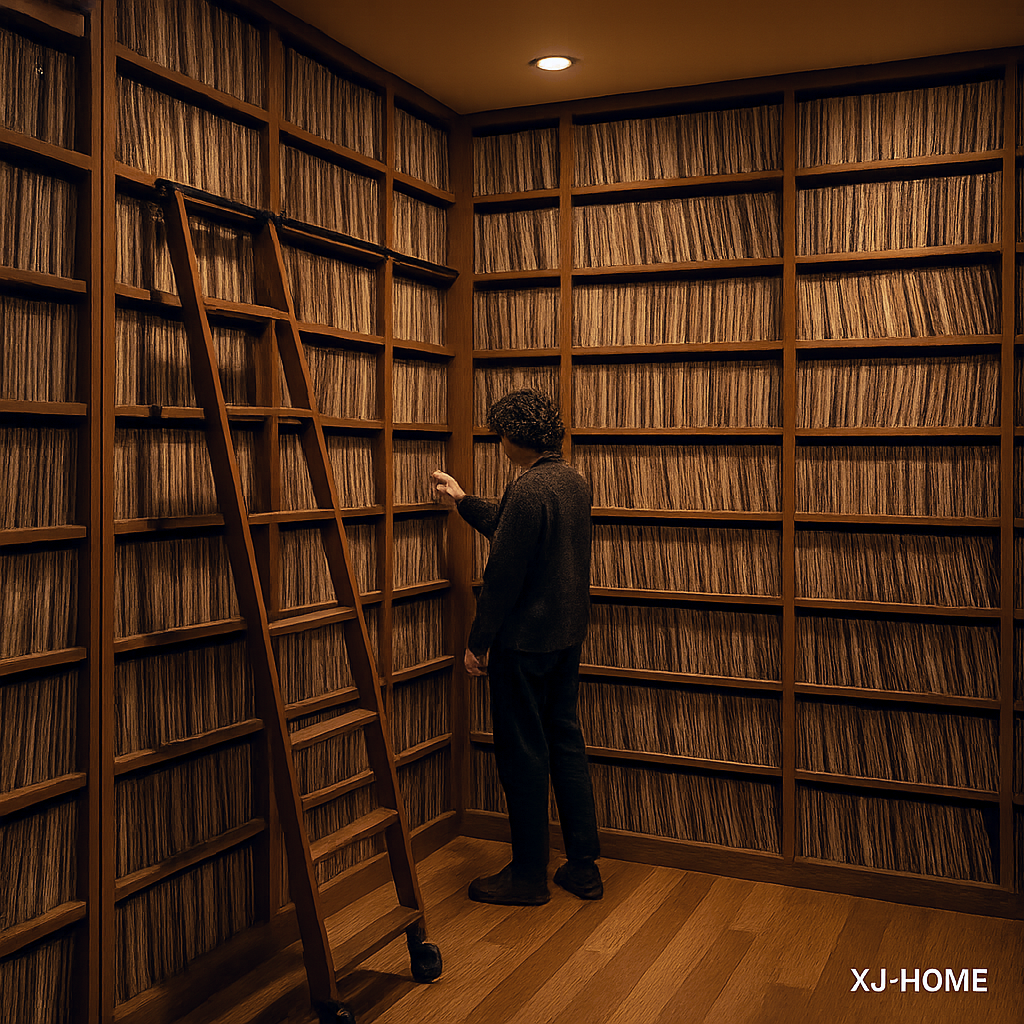You've chosen your turntable, and now you're ready to integrate it into a more traditional hi-fi system with a separate receiver or amplifier. This is a classic setup that offers great flexibility and potential for sonic upgrades down the line. Connecting your turntable correctly is key to unlocking that rich, analog sound and ensuring all your components work together harmoniously.
The process is generally straightforward, but it hinges on one crucial component we've discussed before: the phono preamp. Understanding its role will make these connections click into place.
The Phono Preamp: The Essential Intermediary
As a quick refresher from our guide on phono preamps, the signal from your turntable's cartridge is very low in level and has a specific RIAA equalization curve applied to it. A phono preamp (or phono stage) does two vital things:
-
Boosts the signal to a standard "line level."
-
Applies inverse RIAA equalization to restore the correct tonal balance.
Without a phono preamp in the chain, your records will sound incredibly quiet, thin, and tinny. So, the first step is to determine where your phono preamp resides.
Scenario 1: Your Receiver or Amplifier Has a Dedicated "PHONO" Input
This is the most traditional and often simplest setup. Many integrated amplifiers and stereo receivers, especially those with a nod to analog enthusiasts (including many excellent vintage units), come with a phono preamp built right in.
-
How to Identify: Look at the back panel of your receiver/amplifier. You should see a pair of RCA input jacks clearly labeled "PHONO". Nearby, there will almost always be a grounding post or screw, often labeled "GND" or with the ground symbol (⏚).
-
Connection Steps:
-
Turntable Phono/Line Switch (If Applicable): If your turntable has a switch on the back labeled "PHONO/LINE," ensure it is set to the "PHONO" position. This bypasses the turntable's internal preamp (if it has one), as you'll be using the one in your receiver/amplifier. If your turntable has no such switch, it likely doesn't have an internal preamp, which is perfect for this scenario.
-
RCA Cables: Connect the RCA output cables from your turntable (usually red for right, white/black for left) to the "PHONO" input jacks on your receiver/amplifier.
-
Ground Wire: This is crucial! Connect the thin ground wire from your turntable (it often has a small spade or U-shaped connector) to the "GND" (ground) post on your receiver/amplifier. Loosen the post, slide the connector under it, and tighten it down. This connection helps prevent a common low-frequency hum.
-
Speaker Connections: Ensure your speakers are correctly connected to the speaker terminals on your receiver/amplifier.
-
Select Input & Play: Turn on your components. On your receiver/amplifier, select "PHONO" as the input source. Start a record, and you should be good to go!
-
Scenario 2: Your Turntable Has a Built-In Phono Preamp (and your Amp/Receiver Lacks a "PHONO" Input)
This is common with many modern entry-level turntables and amplifiers/receivers that may only have line-level inputs (like "AUX," "CD," "TAPE," "LINE IN").
-
How to Identify (Turntable): Your turntable will have a switch on the back, often near the RCA output jacks, labeled "PHONO/LINE."
-
How to Identify (Receiver/Amplifier): Your receiver/amplifier will not have a dedicated "PHONO" input, but it will have other RCA inputs like "AUX," "CD," etc.
-
Connection Steps:
-
Turntable Phono/Line Switch: Set this switch on your turntable to the "LINE" position. This activates the turntable's internal phono preamp.
-
RCA Cables: Connect the RCA output cables from your turntable to any available line-level RCA input jacks on your receiver/amplifier (e.g., "AUX," "CD," "LINE 1").
-
Ground Wire: In this configuration, the ground wire connection can be a bit trickier.
-
If your receiver/amplifier still has a "GND" post (even without a phono input), try connecting the turntable's ground wire there.
-
If there's no GND post on the amp, you might not need to connect the turntable's ground wire at all, or you might connect it to a metal chassis screw on the amplifier if you experience hum. Sometimes, the ground is handled through the RCA cables when using the turntable's "LINE" output. If hum is an issue, experimentation might be needed.
-
-
Speaker Connections: Ensure your speakers are connected.
-
Select Input & Play: Turn on your components. On your receiver/amplifier, select the line-level input you connected the turntable to (e.g., "AUX"). Play a record.
-
Scenario 3: Using an External Phono Preamp
This setup is used if neither your turntable nor your receiver/amplifier has a built-in phono preamp, OR if you want to upgrade from a basic built-in phono stage for better sound quality. An external phono preamp is a standalone box that sits between your turntable and your receiver/amplifier.
-
Connection Steps:
-
Turntable to External Phono Preamp:
-
If your turntable has a "PHONO/LINE" switch, set it to "PHONO."
-
Connect the RCA output cables from your turntable to the "INPUT" jacks on your external phono preamp.
-
Connect your turntable's ground wire to the grounding post on the external phono preamp (it will almost certainly have one).
-
-
External Phono Preamp to Receiver/Amplifier:
-
Connect another RCA stereo cable from the "OUTPUT" jacks of your external phono preamp to any available line-level RCA input jacks (e.g., "AUX," "CD") on your receiver/amplifier.
-
-
Grounding (Preamp to Amp): Generally, you don't need a separate ground wire between the external phono preamp and the main amplifier, as the primary ground path is established at the phono preamp.
-
Power: Don't forget to plug in the power supply for your external phono preamp.
-
Speaker Connections: Ensure speakers are connected to your receiver/amplifier.
-
Select Input & Play: Turn everything on. Select the appropriate line-level input on your receiver/amplifier. Enjoy the music!
-
A Note on "Tape Monitor" or "Processor Loops"
Some older amplifiers/receivers have "Tape Monitor" loops or "External Processor" loops. While these are line-level inputs, they sometimes bypass the main preamp's volume and tone controls, or are designed for specific signal processing. For turntable connection (via its own line out or an external phono preamp), standard "AUX," "CD," or other designated line inputs are usually the most straightforward and best choice.
The Goal: Clean Signal, Great Sound
Properly connecting your turntable to your receiver or amplifier is all about ensuring the delicate signal from your cartridge gets the amplification and equalization it needs without picking up unwanted noise or hum. Taking a moment to understand your components and make the right connections lays the groundwork for countless hours of enjoyable vinyl listening. At XJ-HOME (https://xenonjade.com), we believe that a well-connected system, no matter how simple or complex, is the heart of a great audio experience.
For general audio setup tips and troubleshooting, online communities like AVSForum can be a valuable resource for a wide range of audio topics. Happy listening!





Leave a comment
All comments are moderated before being published.
This site is protected by hCaptcha and the hCaptcha Privacy Policy and Terms of Service apply.